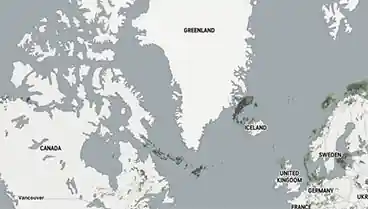❄️ The Coldest Places on Earth Right Now

🧊 Introduction
While many parts of the world are battling heatwaves and wildfires, some regions are experiencing bone-chilling cold. From remote Antarctic research stations to frozen Siberian towns, these locations routinely report temperatures far below freezing—even in the middle of summer in the Northern Hemisphere.
In this post, we take a look at the coldest places on Earth right now, what causes such extreme temperatures, and how people (or scientists) manage to live there. 🌍❄️
🌍 What Causes Extreme Cold?
The coldest regions are usually:
- Far from the equator
- At high altitudes
- Landlocked, meaning they don’t benefit from warm ocean air
- Have clear skies at night, allowing rapid heat loss
These geographical and climatic conditions combine to create areas where temperatures plummet regularly below -40°C.
🏔️ 1. Dome Fuji, Antarctica
- Current Temperature: Around -70°C (-94°F)
- Why it’s cold: High elevation (~3,810 meters), inland location, and dry atmosphere
Located on the Antarctic Plateau, Dome Fuji is one of the coldest places on the planet year-round. In winter, satellite readings have recorded temperatures dropping below -90°C, although these are not official surface records.
There’s no permanent settlement here, only seasonal research stations. Winds are minimal, but the lack of sunlight and thin air make it brutally cold.
🧊 2. Vostok Station, Antarctica
- Current Temperature: About -65°C (-85°F)
- Record Low: -89.2°C (-128.6°F) in July 1983 (world record)
This Russian research station is infamous for holding the record for the coldest surface temperature ever recorded on Earth. Even in Antarctica’s “warmer” months, the temperature rarely rises above -30°C.
Scientists stationed here are trained to survive in harsh, isolated conditions with very little contact with the outside world.
🏞️ 3. Oymyakon, Russia
- Current Temperature: Around -50°C (-58°F) (in peak winter)
- Permanent Population: Yes (~500 people)
This tiny village in Siberia is often called the coldest inhabited place on Earth. People live here year-round despite the sub-zero temperatures, using firewood and coal to heat their homes.
Children still go to school unless it drops below -52°C! The ground is permanently frozen (permafrost), and cars must be kept running during the coldest days to prevent engines from freezing.
🧊 4. Verkhoyansk, Russia
- Current Temperature: Approx. -48°C (-54°F) in winter
- Known for: One of the coldest and hottest inhabited places on Earth
Verkhoyansk is Oymyakon’s neighbor in the same Siberian region, and both towns regularly compete for the title of coldest inhabited town. Interestingly, Verkhoyansk also experiences extremely hot summers—sometimes reaching +30°C—making its temperature range one of the widest on the planet.
🏔️ 5. Eismitte, Greenland
- Current Temperature: Around -45°C (-49°F)
- Name Meaning: “Middle of the Ice”
Located in the center of Greenland’s ice sheet, Eismitte is uninhabited but was once used for expeditions and weather studies. The frigid temperatures are caused by the altitude, ice surface, and polar location.
It’s one of the coldest spots in the Northern Hemisphere outside of Siberia.
🧊 6. North Ice, Greenland
- Current Temperature: Around -42°C (-44°F)
- Historical Note: British research base used during the 1950s
North Ice held the record for the coldest temperature ever recorded in North America for a long time, at -66.1°C. Today, it’s mostly used as a point of interest for climate research and satellite monitoring.
🏔️ 7. Denali, Alaska, USA
- Current Temperature: Around -40°C (-40°F) at summit
- Height: 6,190 meters (20,310 feet)
Denali, North America’s tallest peak, is perpetually frozen. Due to the thin atmosphere and elevation, temperatures near the summit remain dangerously low even during the Alaskan summer.
Climbers must train for high-altitude survival and rapid weather changes that can turn deadly.
🌬️ Why It Matters: Climate Monitoring
Monitoring the coldest places on Earth is crucial for understanding:
- Climate change trends
- Ice sheet stability
- Sea-level rise predictions
Though these places are remote, changes in ice melt or temperature anomalies can indicate major shifts in global climate systems.
🏘️ Can People Live in These Regions?
In many of these locations, especially Antarctica, there are no permanent residents—only seasonal scientists. However, in Siberian towns like Oymyakon, people have adapted remarkably:
- Heated homes and schools
- Underground pipelines to prevent freezing
- Fur-lined clothing and strict outdoor protocols
Despite the cold, life continues—just a bit more slowly!
🛰️ Tools That Track Extreme Cold
Meteorologists use satellites and ground stations to monitor these cold spots:
- NASA’s Aqua and Terra satellites
- NOAA’s Polar-Orbiting Satellites
- Russian Hydrometeorological Service
These agencies provide data that influence aviation, shipping, agriculture, and climate science.
🧠 Final Thoughts
The coldest places on Earth aren’t just scientific curiosities—they serve as vital indicators of our planet’s health. As we continue to study and adapt to a changing climate, knowing how these extreme environments behave helps us prepare for both natural and human-made disruptions.
Whether you’re fascinated by polar expeditions, curious about survival in sub-zero temperatures, or a fan of extreme weather—these icy corners of the world continue to inspire awe and caution alike.